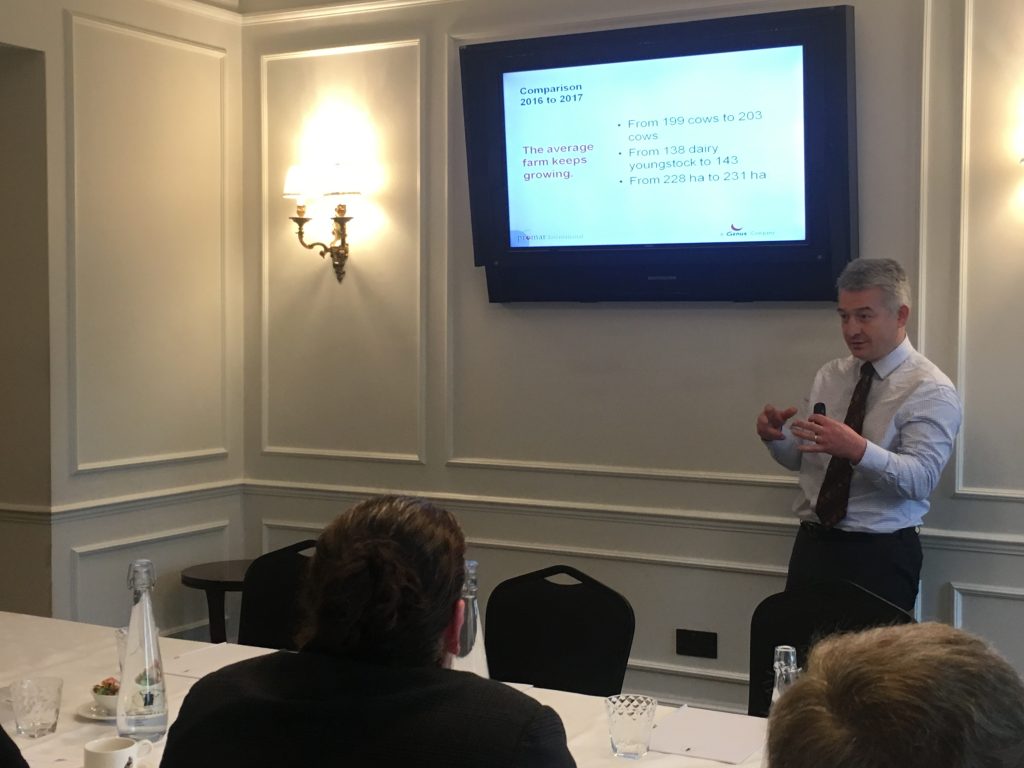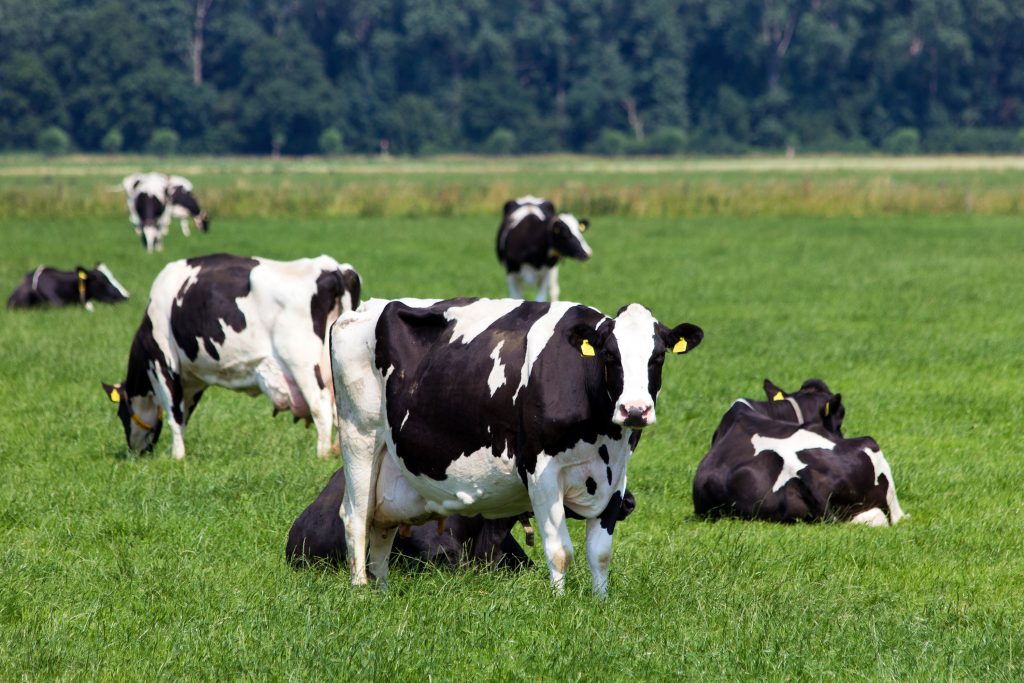The challenge of the bottom line
8th December 2017
The latest data from Promar’s Farm Business Accounts (FBA) for the year-ending March 2017, shows that the upturn in on-farm milk prices came too late in the year to hugely
The latest data from Promar’s Farm Business Accounts (FBA) for the year-ending March 2017, shows that the upturn in on-farm milk prices came too late in the year to hugely impact the bottom line, as profit after depreciation for the average farm in the sample fell by 20 per cent to £43,404, compared with the year-ending March 2016.
Reporting from Promar’s annual data briefing, Promar’s national consultancy manager, Nigel Davies, identified that a big factor in this fall was a decrease of £90 per cow at gross margin level.
However, he remained more optimistic about the March 2018 year-end outlook, which should report improved profitability for most. “The sustained milk price increases in the year to date are feeding through to notable improvements in gross profits so far into the year,” said Mr Davies. But he added that a comprehensive approach to financial performance and planning remains key, as gains this year are likely to be diluted by increased overheads and inflationary pressures, and post-March 2018, milk price volatility is likely to continue.
He also encouraged producers to review every aspect of their business to drive efficiencies and ultimately increase profitability. “This is something that the top 25 per cent practice continually and one that, with help, the majority of farmers can also employ.

Promar’s national consultancy manager, Nigel Davies.
“The data identifies huge disparities in the performance of the top 25 per cent of the sample. For instance, the operating profit per cow is more than double compared with the average, at £885 per cow, this amounts to a staggering difference of over £90,000 in resulting profit for an average sized business in the sample.”
He said that with the average herd size increasing by four cows, and farm land increasing by 2.4ha per holding, many producers are driving economies of scale. “Scale is important, but critical to profitability is a need to continually improve technical efficiencies across the business.
“Interestingly the top 25 per cent of farms have eight fewer cows than the average. And their profitability is also not primarily linked to their milk price, which accounts for just £88 per cow.
“Yield helps, but not at all costs,” he added. “Reviewing gross margins is key, for instance the top 25 per cent reported feed costs of 0.33ppl less than the average, and marginal improvements in herd fertility, culling rates and death.”
It’s not just about focusing on the milking herd, he said. “Management of grassland and forage crops gives the top 25 per cent an £18 per cow advantage. Better youngstock management can add a significant £28 per cow advantage too.”
He also added that overhead costs shouldn’t be viewed as ‘fixed’. “A striking £216 operating profit per cow difference in the top 25 per cent comes from efficient overhead cost management, which is the equivalent of 2.53ppl.
“Predominantly this difference is made in labour efficiency and machinery related costs, and all producers should be considering how they can improve these two areas.
“And, with inflation currently at 3 per cent, oil prices increasing and a shortage of quality labour, we forecast that overhead costs will rise rapidly into 2018.”

